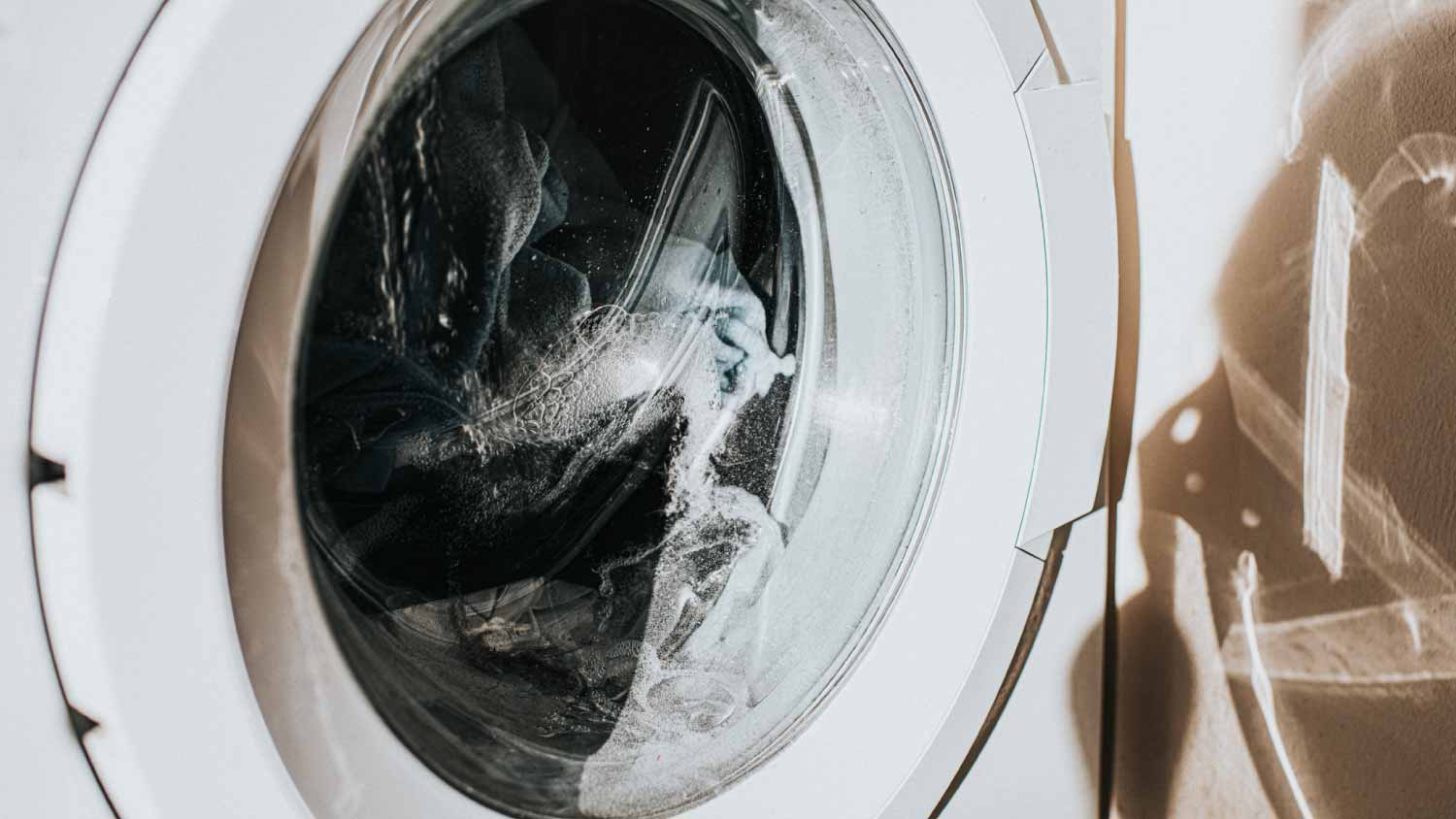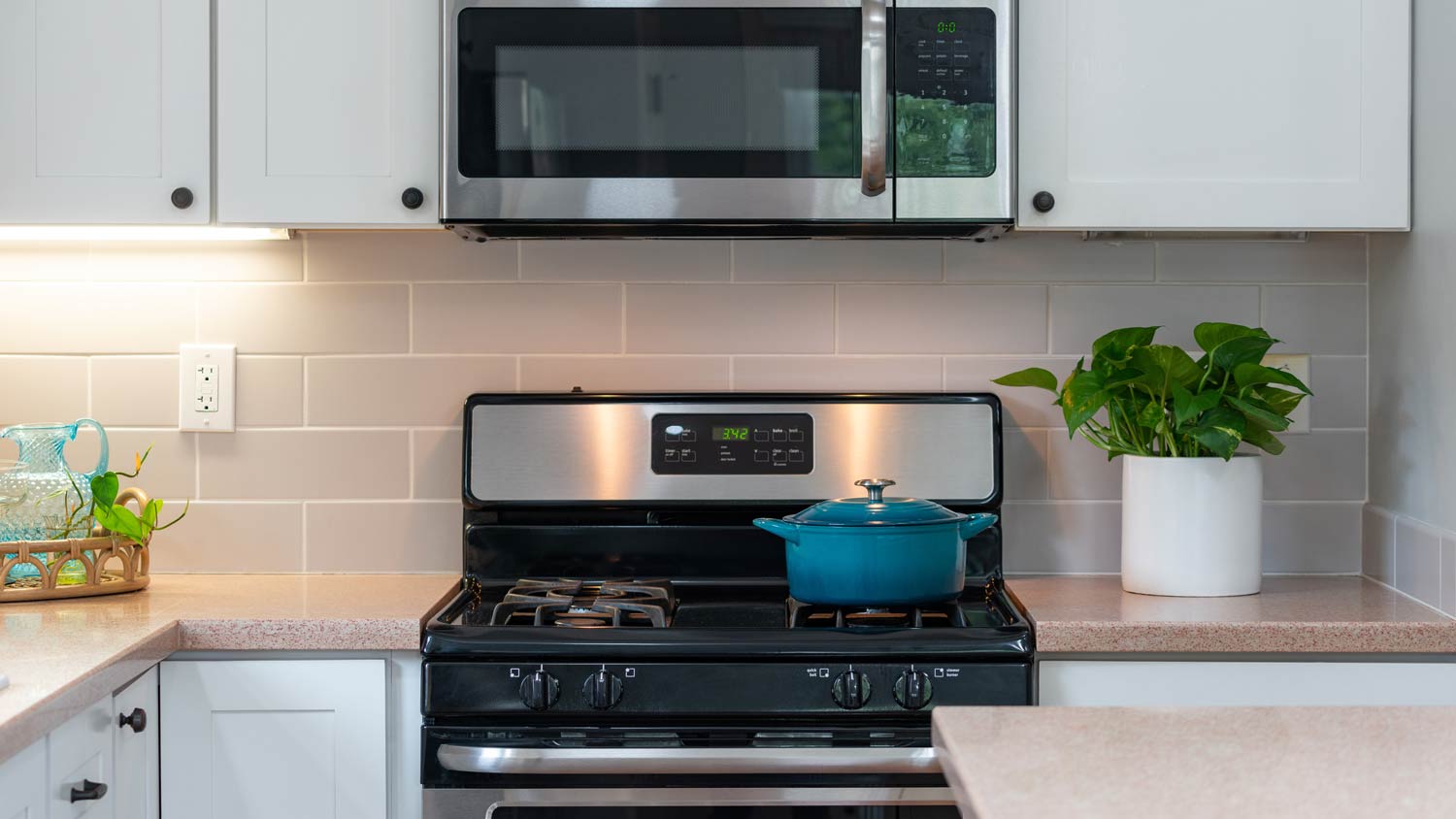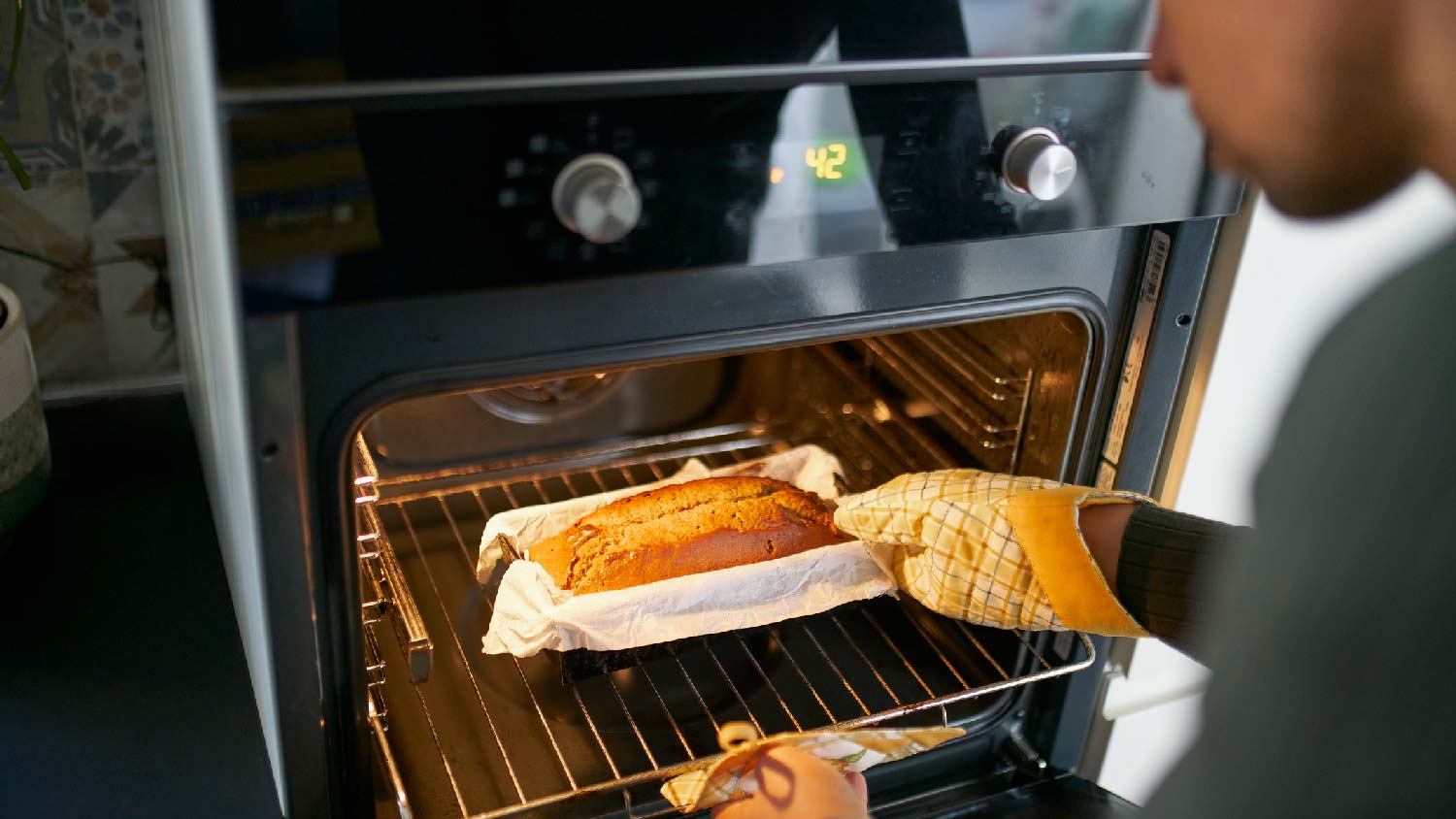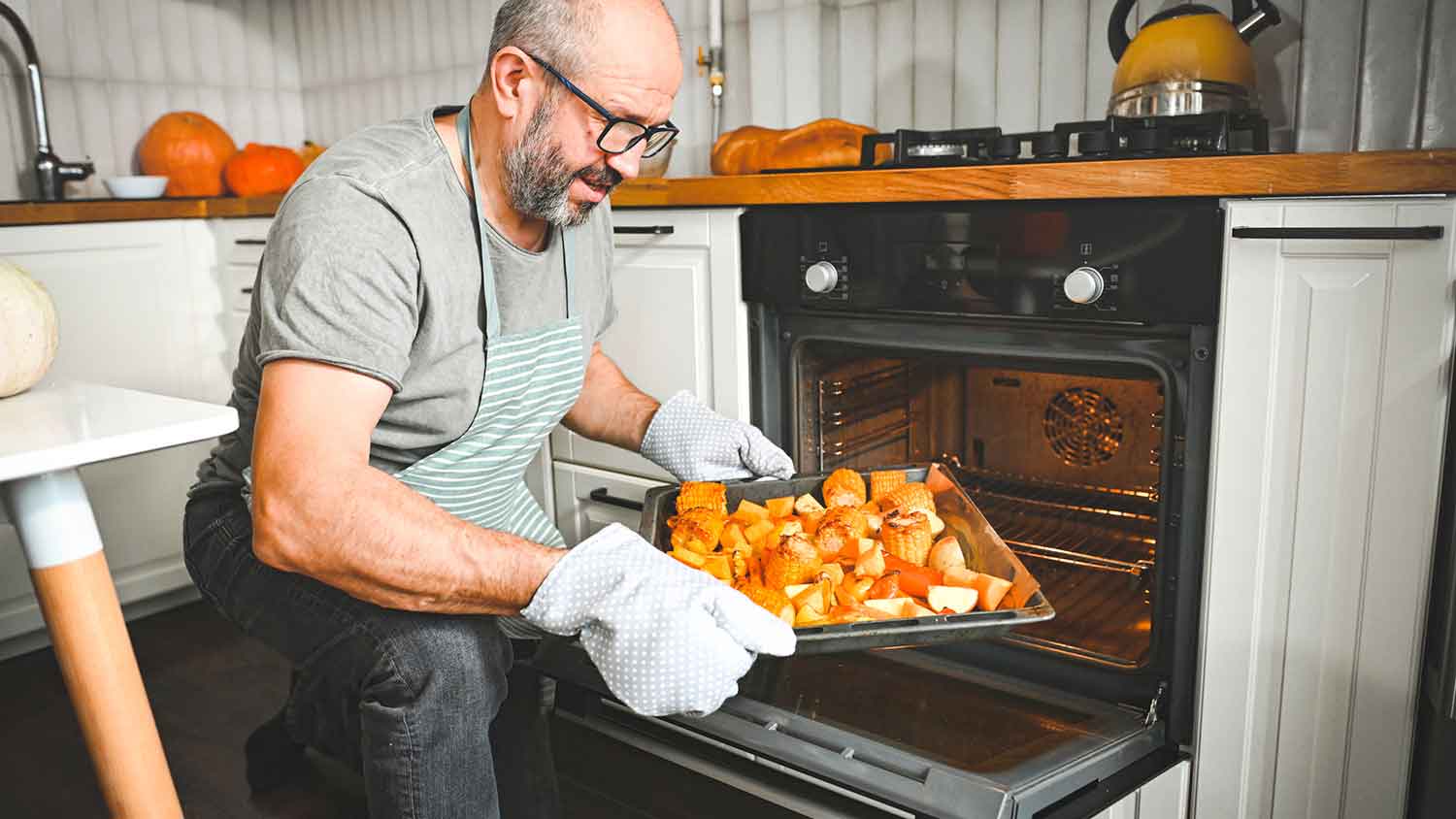How Long Does a Self-Cleaning Oven Cycle Take?
Self-cleaning oven cycles produce sparkling results


The self-clean function on your oven sounds easy enough, but before you hit the start button, plan ahead by learning how long a self-cleaning oven takes. Whether you decide on a standard, high-heat self-clean cycle or the steam option, follow these timelines to determine how long your self-clean oven cycle will last.
How Long Does a Self-Clean Oven Take?

A standard high-heat self-clean can take between 4 hours and 15 minutes and 6 hours and 45 minutes. Or a steam self-clean cycle will take 1 hour and 15 minutes. Keep in mind that these timelines include prep time, self-cleaning cycle, cool-down time, and final clean-up. You should consult your oven’s owner’s manual for exact directions for running the self-clean cycle.
If you decide to run the high-heat option, we recommend waiting for a lazy Sunday or a day when you plan to be home for the full duration of the cycle. Since your oven will be heating to very high temperatures, the last thing you should do is leave the oven unattended to go on a last-minute grocery run.
Preparing for the Oven’s Self-Clean Cycle
You should set aside 30 minutes to prepare for a high-heat self-clean. On the other hand, the steam self-clean cycle doesn’t require any preparation, except for pouring 1 cup of distilled water into the bottom of the oven.
Remove oven racks: For high-heat self-clean cycles, the first step is to remove all of your racks and pots from inside the oven. Depending on your model, you may have self-cleaning racks, which you can leave inside.
Clear away debris: Next, you’ll want to do a quick cleaning. You don’t have to follow all the steps for a thorough oven cleaning, but you should wipe away easy-to-clear debris. Use a wet towel or sponge (not chemical cleaners) and clean out any food bits and residue from your oven.
Remove aluminum foil: This prep step will minimize the smoking that happens when you run the clean cycle. Take care to clean up aluminum foil pieces, no matter how small, because they can melt and warp the interior of your oven.
Clear top of the oven: Remove anything from the top and around the oven like dish towels, pots, and pans. You should also uncover the oven vent, turn on the exhaust fan, and ventilate the room by cracking open windows and doors.
Test carbon monoxide detector: Check your carbon monoxide detector and make sure it’s working before starting the self-clean oven cycle.
How Does a High-Heat Self-Clean Oven Cycle Work?
The self-clean cycle options will vary depending on your oven’s make and model, but you can choose from 1, 2, 3, or 4-hour cycles. If this is your first self-clean oven cycle, you should start with the shortest setting to see how it works before committing to a longer cycle.
Once you start the cycle, the doors should lock, but if they don’t, you should manually lock them. Your oven will reach extremely high temperatures, from 800 to 1,000 degrees Fahrenheit. Any food, grease, and debris will burn and turn into ash. Due to these high temperatures, you should only do it sparingly—around once a year. Follow tips for maintaining your oven in between self-cleaning cycles.
You might notice an unpleasant smell during the cycle, either coming from the food burning up or the oven’s enamel. If this is one of the first few times you’re running the self-clean cycle, it’s possible that it’s the enamel.
The odor and smoke might irritate pets and people with respiratory sensitivities, so make sure to ventilate the room well or leave the kitchen. If you choose to leave the kitchen, it’s a good idea to check on the oven periodically.
How Does a Steam Self-Clean Oven Cycle Work?
If you don’t have a lot of time to devote to your oven’s self-clean cycle, try the steam option. It only takes around 30 minutes, and the oven only heats up to 250 degrees Fahrenheit. You’ll need to pour 1 cup of water onto the floor of the oven, but consult your oven’s user manual for exact measurements before starting the steam-clean cycle.
You can leave racks and pots inside the oven during the steam clean, although you might have better results if you remove them. This process will produce steam to loosen stuck-on food and debris from inside your oven. After the cycle is complete, you’ll need to wipe down the oven’s interior to remove the leftover debris.
How Long Does It Take for the Oven to Cool Down After the Self-Clean Cycle?

It takes 30 minutes for an oven to cool down after a steam clean, while it can take around 2 hours for the oven to cool down after a high-heat cycle. Once the oven is cooled down, the doors will unlock. Because the process can take so long, it’s best to plan ahead for self-cleaning cycles to avoid oven repairs during the holidays.
How Long Does It Take to Clean After the Self-Clean Cycle?
Once your oven completes its self-clean cycle, it’ll take you 15 minutes to clean up. After a steam clean, you can get rid of any stubborn spills with a mixture of equal parts vinegar and baking soda. You might notice gunk on your ceiling and upper side walls, which you can scrub away manually.
If you finish a high-heat self-clean, you should take a damp cloth or sponge and wipe away the ash.
Frequently Asked Questions
Generally speaking, you should use the self-clean function about once a year. Because of the high temperatures during the self-clean cycle, using it too often is one of the common mistakes that’ll break your oven.
Whether you can stop a self-clean cycle early depends on the make and model of your oven. There is usually a stop or cancel option if you need it. In most cases, forcing your oven to stop the cycle early is not a good idea. You might have a lot of smoke from food burning up, or you can damage your oven.
Make sure you wait until the oven has completely cooled off before attempting to start another cycle. If your oven is acting up, you should hire an appliance repair pro near you to help you get back to business.
Once the oven doors unlock and you wipe out the ash, you can use your oven right away. It’s important to not skip the manual cleaning at the end of the cycle because you don’t want the ash to mingle with your next baking project.





- Appliance Repair Companies
- Washing Machine Repair
- Dryer Repair
- Refrigerator Repair
- Dishwasher Repair
- Oven Repair
- Wood & Pellet Stove Repair
- Freezer Repair Services
- Wood Stove Services
- Gas Stove Repair
- Emergency Appliance Repair Companies
- Ice Maker Repair
- Gas Appliance Repair
- GE Appliance Repair
- GE Refrigerator Repair
- GE Dryer Repair
- GE Dishwasher Repair
- GE Washing Machine Repair
- Samsung Appliance Repair
- Samsung Refrigerator Repair
- Samsung Dryer Repair
- Samsung Washer Repair
- Samsung Dishwasher Repair
- Samsung Oven Repair
- Whirlpool Repair
- Whirlpool Refrigerator Repair
- Whirlpool Washer Repair
- Whirlpool Dryer Repair
- Whirlpool Oven Repair
- Maytag Appliance Repair
- Maytag Refrigerator Repair
- Maytag Washer Repair
- Maytag Dryer Repair
- Maytag Dishwasher Repair
- Kitchenaid Appliance Repair
- Kitchenaid Oven Repair
- Kitchenaid Refrigerator Repair
- Kenmore Appliance Repair
- Kenmore Dishwasher Repair
- Kenmore Washer Repair
- Kenmore Dryer Repair
- LG Refrigerator Repair
- Bosch Appliance Repair
- Kenmore Refrigerator Repair
- LG Appliance Repair Services
- GE Microwave Repair
- Electrolux Appliance Repair
- Electrolux Washer Repair
- Kitchenaid Dishwasher Repair Services
- Wood Stove Inspection
- Dishwasher Installation
- Trash Compactor Repair
- How to Steam Clean Your Oven Easily
- How to Clean Oven Glass Inside and Out So Your Appliance Looks Brand New
- Wall Oven Size Guide: How to Pick the Right Fit
- Should I Repair or Replace my Oven?
- How to Calibrate an Oven With Digital or Analog Controls
- Who to Call to Fix Your Electric Oven
- Gas vs. Electric Ovens: Pros, Cons, Cost, and More
- What Are the Parts of a Stove?
- The Top 5 Benefits of Steam Cleaning
- Parts of a Dishwasher: Learn What They Are and How They Work










